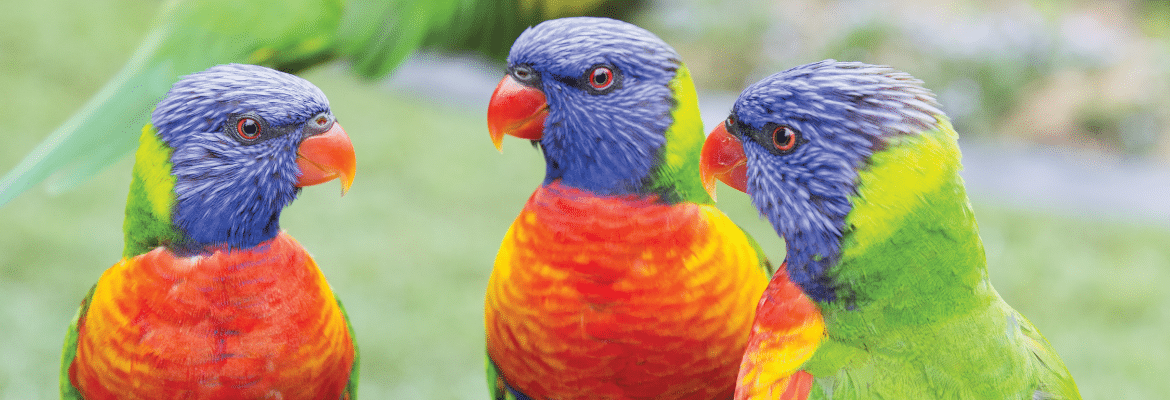
Rainbow lorikeet
Conservation status: IUCN – LC (Least concern); CITES Appendix II.
Geographic range: Australia, Eastern Indonesia, Papua New Guinea, New Caledonia, Solomon and Vanuatu Islands. Introduced to Hong Kong.
Physical description: These average-sized parrots are 25 to 30 cm large and typically weigh between 120 and 160 g. Lorikeets have very colourful feathers. Both genders look alike and the most effective way to ascertain gender is DNA testing of their feathers. The young have a black coloured beak, which gets orange with age.
Biology: Lorikeets have a distinctive brush-like tongue helping them to lick nectar and pollen. They are very social, playful and active. Rainbow lorikeets live in groups of 50 to 1000 individuals. They land on the ground very rarely but are great travellers, capable of flying about 30 km without landing. They can be aggressive towards other birds especially when protecting their food and can destroy the nests of other parrots. These parrots breed monogamously during the southern hemisphere spring (September-December), building nests in tree hollows or in gaps between rocks. Usually, they lay 1-3 eggs that hatch after approximately 25 days and are taken care of by the female of the pair. Some lorikeet species are considered as pests.
Lifespan: In the wild 12 years, in captivity 20 years.
Food habits: Fruit, blossoms, nectars and pollen.